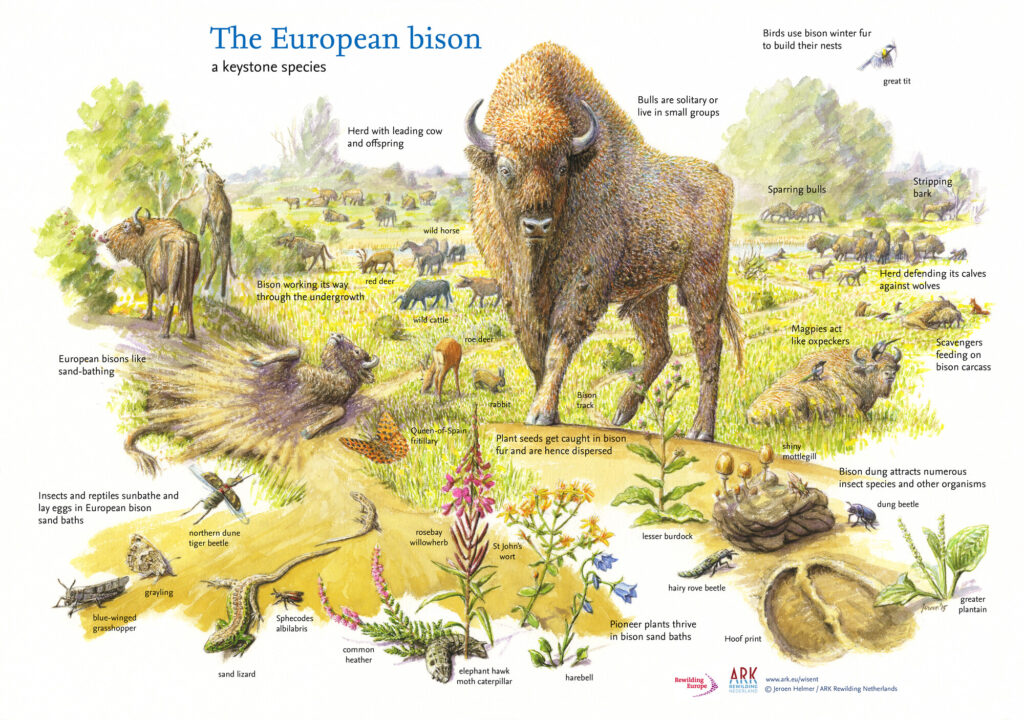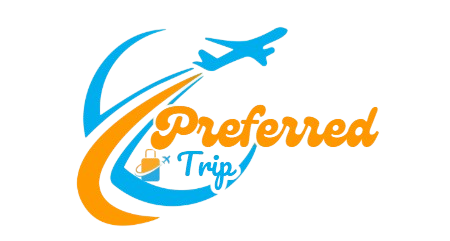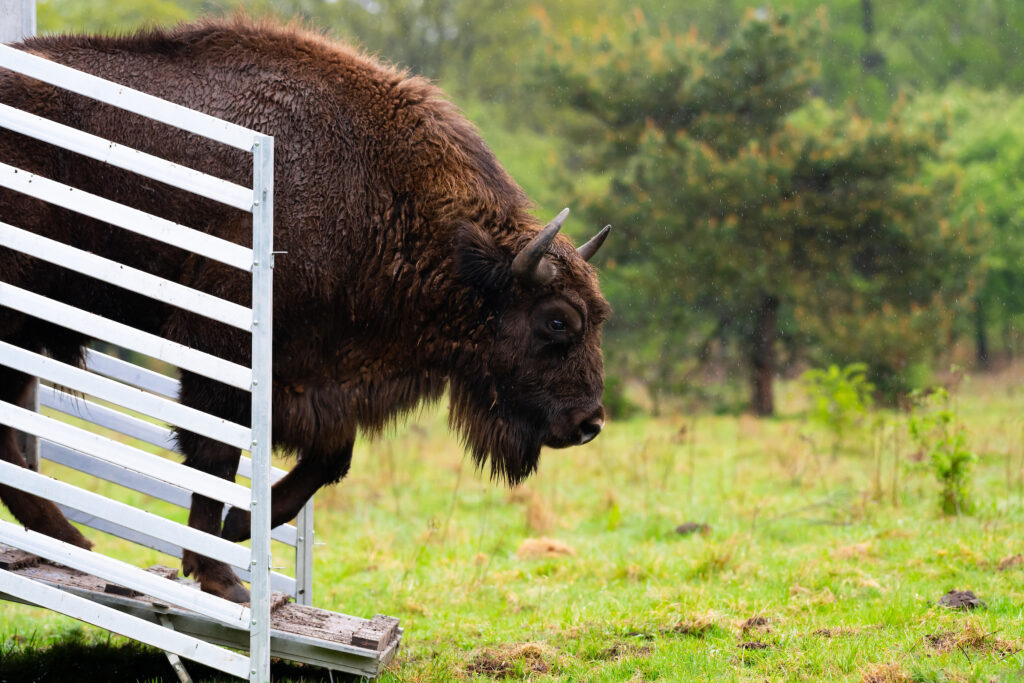Supported by a grant from Rewilding Europe’s European Wildlife Comeback Fund, four male European bison have been translocated from Poland to Dutch rewilding sites. By enhancing the genetic diversity of bison populations in the Netherlands, the animals will help to secure a healthy future for this iconic and ecologically important species across the continent.

Arjen Boerman
Towards healthier bison herds
A 19,700-euro grant from Rewilding Europe’s European Wildlife Comeback Fund has supported the translocation of four male European bison from the Pszczyna nature park in southern Poland to the Netherlands. The bulls were divided between the Veluwe, De Maashorst, and Kraansvlak nature reserves, which are all members of Rewilding Europe’s European Rewilding Network. The animals will enhance the genetic diversity and health of the growing bison populations at these sites and contribute to the recovery of the European bison in the Netherlands and across Europe.
Small European bison populations currently graze at five sites in the Netherlands: in the Veluwe and De Maashorst, at Kraansvlak and Slikken van de Heen – another European Rewilding Network member – and in the Lelystad Nature Park. Dutch NGO FREE Nature, the recipient of the European Wildlife Comeback Fund grant and largest private natural grazing organisation in the Netherlands, is responsible for the management of the bison populations in the Veluwe, De Maashort, and Slikken van de Heen reserves. De Maashorst also hosts populations of Exmoor ponies and Tauros, which are managed by Grazelands Rewilding.
Boosting genetic diversity
European bison were hunted to extinction in the wild by start of the twentieth century, which means all animals alive today are descended from a very few bison left alive in zoos. This means the genetic diversity of the species is very low. FREE Nature treats the Dutch European bison population – which currently numbers around 60 animals across the five rewilding sites – as one big metapopulation. Bulls are frequently moved between sites to diversify the gene pool.
“The bison herds at Dutch rewilding sites are growing naturally and needed some fresh genetic input,” explains Roeland Vermeulen, director of FREE Nature. “Importing these bulls from Poland will probably keep us going for the next five to eight years.
“Moving forwards, our aim is to increase the number of Dutch sites hosting free-roaming bison and to eventually reach a population of around 150 animals. At this point, the population would be genetically viable and would no longer require the addition of bulls from outside the Netherlands. We have also exported bison to other European countries, such as Denmark and Spain, so steps to enhance the genetic diversity of Dutch herds have a positive knock-on impact at an international level.”
“Moving forwards, our aim is to increase the number of Dutch sites hosting free-roaming bison and to eventually reach a population of around 150 animals.”

Roeland Vermeulen
Director of Free Nature
Enhancing wild nature
European bison are iconic keystone species that deliver a wide range of benefits to people and nature, with their influential presence in landscapes helping to enhance carbon sequestration, boost biodiversity, and drive the growth of nature-based tourism. This is why Rewilding Europe has reintroduced the species in several of its landscapes and is working to create conditions where people and free-roaming bison can thrive together. We are also helping other rewilding initiatives to scale up bison recovery across Europe through the European Wildlife Comeback Fund. In 2023, for example, a grant from the fund supported the translocation of 10 bison from Germany to Azerbaijan.
As the bison herds at Dutch rewilding sites continue to grow, so their beneficial impact on the landscape will continue to grow too.

Jeroen Helmer
“This impact is increasingly evident,” says Roeland Vermeulen. “At Kraansvlak, for example, which is a coastal dune area, there are already a lot more open sandy dunes, which creates microhabitats for other wildlife species to thrive. And in De Maashorst, the bison are breaking up forested areas – debarking trees and creating open areas, which also boosts biodiversity.”
At Dutch rewilding sites where bison live alongside animals such as semi-wild bovines and horses, having more than one herbivore in the landscape amplifies their positive impact.
“These herbivores all have to use different resources to co-exist – particularly in the winter,” explains Roeland Vermeulen. “The horses graze yellow grasses and debark trees. The bovines nibble at the buds and twigs of different tree species, while the European bison also debark trees and open up the soil by wallowing, which creates favourable habitats for species such as rabbits. And bison and other semi-wild bovines create bull pits which attract heat-loving insects.”

James Shooter

Neil Aldridge
Back from the brink
The European bison, Europe’s largest native land mammal, was historically distributed throughout western, central and southeastern Europe, extending to Russia’s Volga River and down to the Caucasus region. With the shooting of the last wild bison in the Caucasus in 1927, the species was completely wiped out in its natural habitat.
It is from this low point that the European bison has slowly but surely inched its way back, supported by various breeding programmes and reintroductions. There are now a wide range of European bison reintroduction initiatives taking place across Europe – including in Rewilding Europe’s Southern Carpathians (Romania) and Rhodope Mountains (Bulgaria) rewilding landscapes. Over the last two decades, the estimated number of free-roaming European bison has increased from around 2500 to more than 9500 individuals, with the largest herds found in Belarus and Poland.

Daniel Mirlea
Let’s rewild together
The agile setup of the European Wildlife Comeback Fund is designed to support wildlife comeback in a convenient and flexible way. Rewilding Europe invites other initiatives working to reintroduce keystone species in European landscapes to consider applying for a grant.
FREE Nature has a long history of co-operation with Rewilding Europe – many of the European bison at Dutch rewilding sites were provided by Rewilding Europe via the European Wildlife Bank, a natural grazing tool which has now evolved into the Natural Grazing Facility. The NGO used the European Wildlife Comeback Fund grant to transport the bison from Poland, conduct veterinary checks, and carry out preparatory work at the Dutch rewilding sites that received them.
“The grant was easy to apply for and the funding made a big difference,” says Roeland Vermeulen. “I would highly recommend other rewilding initiatives reintroducing keystone species across Europe to consider making an application.”

Arjen Boerman
Those interested in contributing to wildlife recovery in Europe can support wildlife comeback with an online donation. If you’d like to invest more than 50,000 euros in the European Wildlife Comeback Fund, we’d love to get in touch with you personally.
Want to know more?

